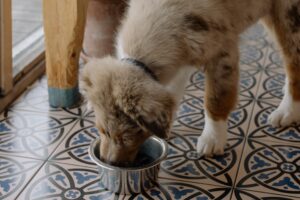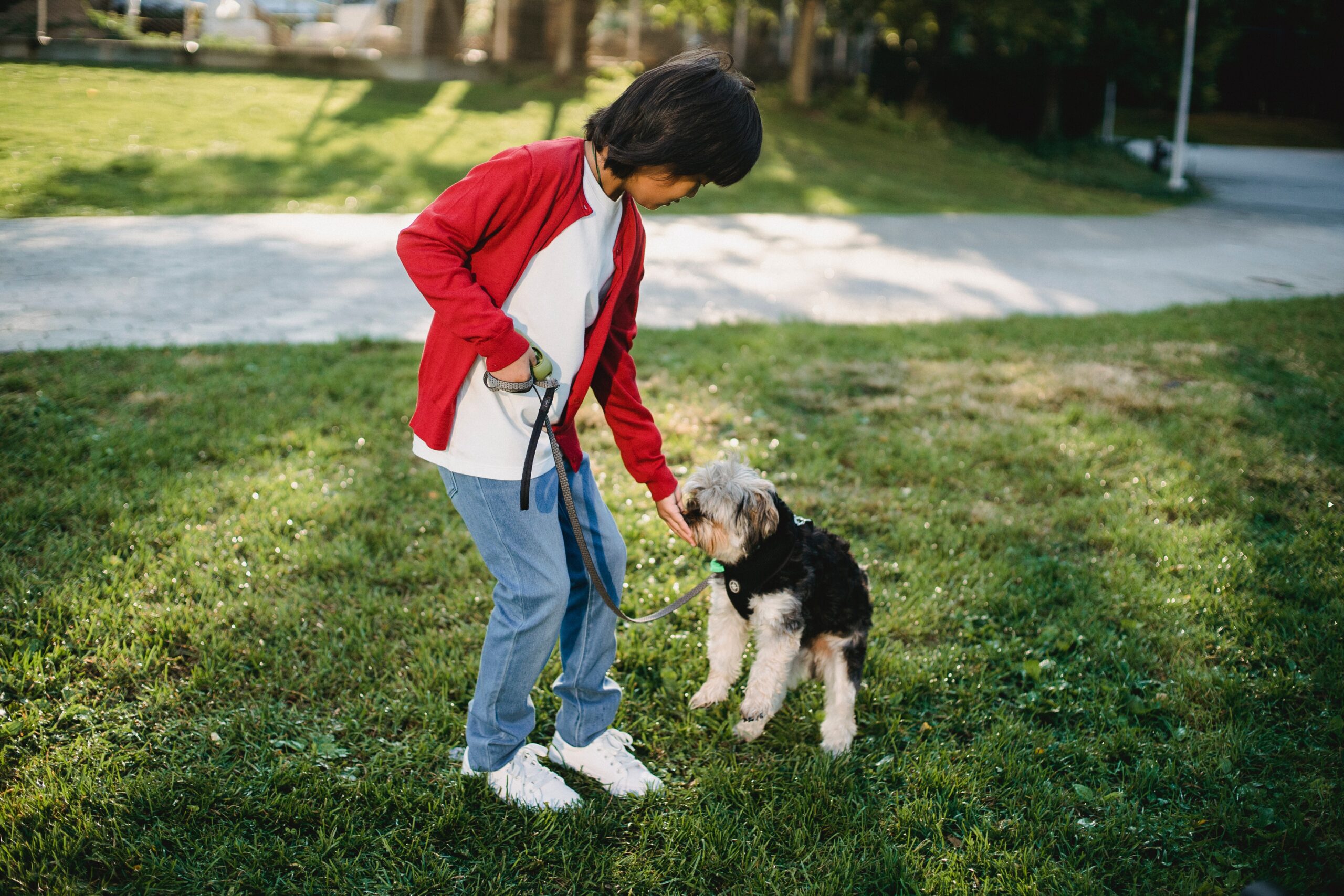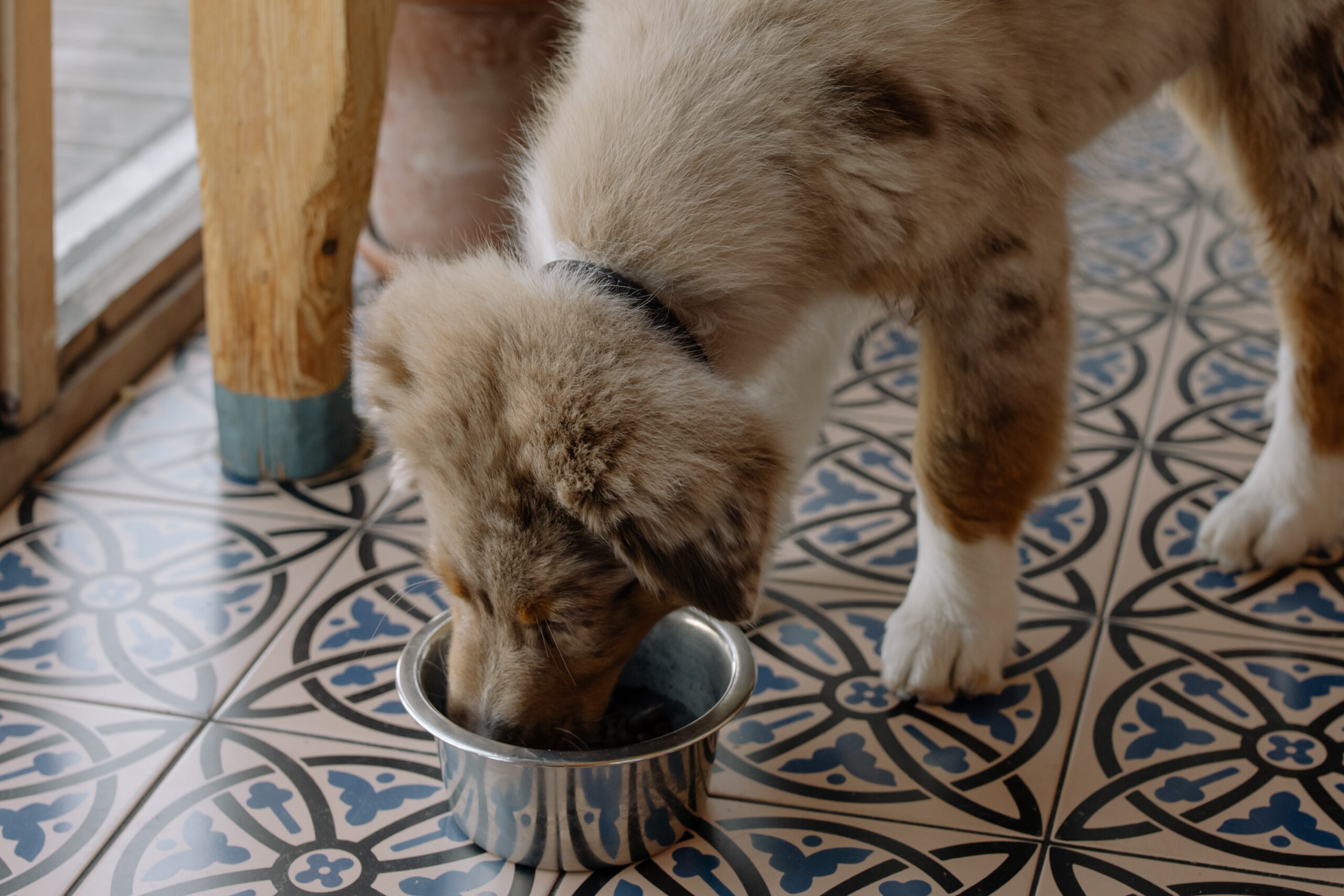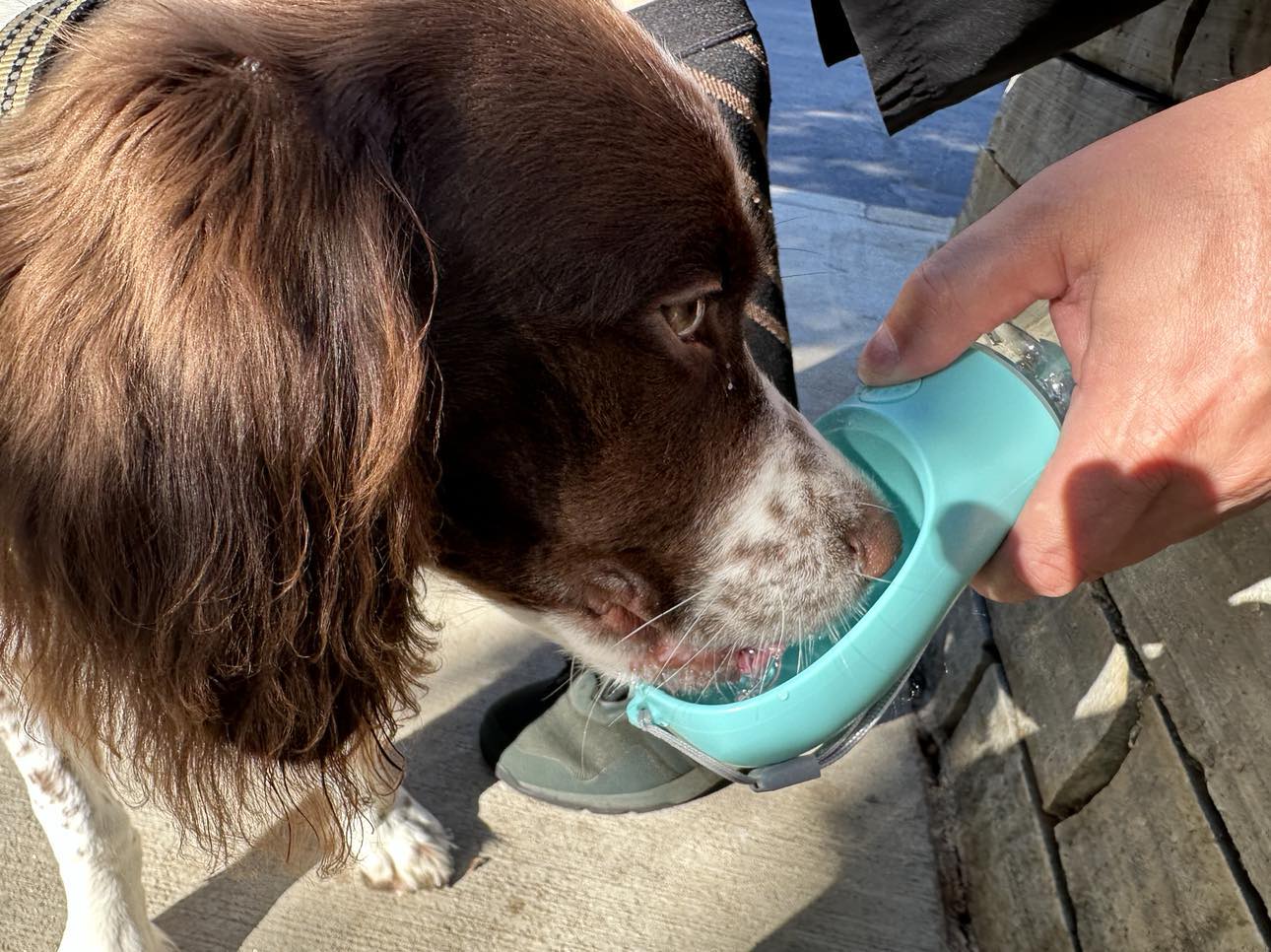Training a puppy is a delightful journey filled with challenges, growth, and, most importantly, rewards. One of the key tools in a puppy owner’s training arsenal is treats. Beyond their delicious appeal, treats play a pivotal role in shaping a puppy’s behavior and fostering a strong bond between the owner and their furry companion. In this article, we will delve into the world of puppy training treats, exploring their significance and the ways in which they contribute to the overall training experience.
The Significance of Treats in Puppy Training
Treats act as more than just a tasty morsel; they are a cornerstone of positive reinforcement, a fundamental training technique based on operant conditioning. This technique involves rewarding desired behaviors to encourage their repetition. When a puppy receives a treat immediately after displaying the desired behavior, such as sitting on command or walking politely on a leash, it associates that behavior with a positive outcome. This positive association motivates the puppy to eagerly comply with commands and engage in the desired actions.
The act of offering treats communicates to the puppy that it has done something right, reinforcing the idea that pleasing their owner leads to pleasant outcomes. Over time, this association between behavior and reward becomes stronger, leading to more consistent and reliable responses from the puppy.
Establishing a Positive and Rewarding Training Experience
Puppy training is not just about imparting skills; it’s about building a meaningful and lasting relationship between the owner and the puppy. Treats contribute significantly to the creation of a positive training environment. When a puppy receives treats during training, it experiences positive emotions such as joy and satisfaction. This positivity extends to the training sessions themselves, making them enjoyable and engaging experiences for both the puppy and the owner.
Furthermore, the use of treats fosters trust and a sense of security between the puppy and the owner. As the owner consistently rewards the puppy for good behavior, the puppy begins to see the owner as a source of comfort, guidance, and positive experiences. This lays the foundation for a strong bond built on mutual respect and understanding.
In essence, treats serve as a bridge that connects a puppy’s natural instincts to learn and please with the owner’s goals of imparting skills and nurturing a loving relationship. By utilizing treats strategically and thoughtfully, puppy owners can create a harmonious and enriching training experience that sets the stage for a well-behaved and emotionally connected companion.
Understanding the Role of Treats in Puppy Training
Operant Conditioning and Positive Reinforcement
At the heart of effective puppy training lies the principle of operant conditioning, a psychological concept that forms the basis for many modern training techniques. Within this framework, positive reinforcement stands as a powerful tool, with treats serving as the primary means of reinforcement.
Positive reinforcement involves rewarding a desired behavior to increase the likelihood of its recurrence. When it comes to puppy training, treats are used as positive reinforcers to encourage puppies to perform specific actions. For instance, when a puppy sits promptly upon hearing the “sit” command, offering a treat immediately afterward reinforces the connection between the command and the action, making it more likely that the puppy will sit again in the future.
Treats, as immediate rewards, create a clear cause-and-effect relationship in the puppy’s mind. This clarity accelerates the learning process, enabling the puppy to quickly grasp the connection between its actions and the subsequent rewards. Through this consistent reinforcement of desired behaviors, puppies become more motivated to engage in training and exhibit positive conduct.
Building a Strong Bond Between the Puppy and Owner
Beyond the mechanics of training, treats hold the potential to nurture a deep and lasting bond between the puppy and its owner. This bond, built on trust and mutual respect, serves as a foundation for a healthy and happy relationship.
When an owner rewards a puppy with treats, several positive dynamics come into play. Firstly, the puppy perceives its owner as a source of happiness and gratification. This positive association with the owner enhances the puppy’s willingness to follow commands and engage in training exercises. As the owner consistently delivers treats, the puppy learns to anticipate these rewards, fostering a sense of excitement and eagerness during training sessions.
Secondly, the act of offering treats creates opportunities for interaction, communication, and shared experiences. The owner’s presence becomes associated with encouragement and positivity, leading to a stronger emotional connection. This connection goes beyond obedience training and extends to various aspects of the puppy’s life, from playtime to relaxation.
In essence, treats function not only as rewards for specific behaviors but also as symbols of the owner’s care and affection. This emotional dimension adds depth to the training process, making it a collaborative effort rather than a mere exercise in obedience. Through the consistent use of treats and positive reinforcement, owners can establish a foundation of trust, love, and cooperation that enriches their relationship with their furry friend.
Criteria for Selecting the Best Treats
Selecting the right treats for puppy training goes beyond grabbing any treat off the shelf. The treats you choose should meet specific criteria to ensure they effectively serve their purpose while keeping your puppy’s health and preferences in mind.
Size and Texture
- Easily Consumable and Digestible: When training, you want treats that can be quickly consumed by your puppy without causing delays in the training process. Small-sized treats that your puppy can gulp down in a single bite are ideal. Additionally, treats should be easily digestible to prevent any digestive discomfort or issues.
- Non-Crumbly and Non-Greasy Options: Treats that are excessively crumbly or greasy can create distractions during training. Crumbs falling to the ground can divert your puppy’s attention, and greasy treats may leave residue on your hands or surfaces. Opt for treats that are relatively clean to handle and won’t leave a mess.
Nutritional Value
- High-Quality Ingredients: Prioritize treats made from high-quality, natural ingredients. Look for treats that list real meat (chicken, turkey, beef, etc.) or other wholesome ingredients as the main components. Avoid treats with excessive fillers, by-products, and artificial additives.
- Balanced between Taste and Healthiness: While treats are meant to be delicious incentives, it’s important to strike a balance between taste and healthiness. Avoid treats that are overly sugary or fatty, as these can contribute to weight gain and health issues. Opt for treats that offer a satisfying taste while still being relatively low in calories.
Aroma and Flavor
- Appealing Scent to Capture the Puppy’s Attention: Puppies rely heavily on their sense of smell, so treats with a strong and enticing aroma can significantly enhance their motivation during training. A treat’s smell should pique your puppy’s interest and encourage them to focus on the training task at hand.
- Varied Flavors to Prevent Monotony: Just like humans, puppies can experience flavor fatigue if they are repeatedly given the same treats. Introduce a variety of flavors to keep training sessions engaging and exciting for your puppy. This variety prevents your puppy from becoming disinterested in their treats and maintains their enthusiasm for training.
By carefully considering these criteria, you can ensure that the treats you choose for puppy training are not only effective as rewards but also align with your puppy’s nutritional needs and preferences. Remember, the right treats can play a crucial role in making training sessions enjoyable and productive for both you and your furry companion.
Types of Treats Suitable for Puppy Training
When it comes to puppy training treats, there’s a wide array of options available. From store-bought treats designed specifically for training to homemade creations made with love, each type has its own advantages. Understanding the different types of treats can help you choose the ones that best suit your puppy’s needs and training goals.
Commercial Treats
- Store-Bought Training Treats: Designed with training in mind, these treats are often small, flavorful, and have a high palatability factor. They are conveniently sized for quick consumption during training sessions, ensuring minimal interruption in the training flow. Many of these treats come in resealable packaging, making them easy to carry and store. Look for options with simple ingredient lists and minimal additives.
- Dental Chews for Oral Health: Some commercial treats are not only tasty but also contribute to your puppy’s dental health. Dental chews are formulated to help clean your puppy’s teeth and gums while they enjoy their treat. This serves a dual purpose, providing a reward for training accomplishments while maintaining good oral hygiene.
Homemade Treats
- Benefits of Controlling Ingredients: Making treats at home gives you full control over the ingredients you use. This is particularly advantageous if your puppy has specific dietary requirements or sensitivities. Homemade treats allow you to cater to your puppy’s individual needs and preferences, ensuring they receive wholesome and nutritious rewards.
- Simple Recipes for DIY Treats: Creating homemade treats doesn’t have to be complicated. There are plenty of simple and quick recipes available that require minimal ingredients and effort. Common ingredients for homemade treats include lean meats (chicken, turkey), vegetables (carrots, sweet potatoes), and whole grains (oats, brown rice). These treats can be baked or even frozen, providing a variety of textures and flavors.
Choosing between commercial and homemade treats depends on factors such as convenience, dietary considerations, and your puppy’s preferences. Whichever route you opt for, the key is to ensure that the treats align with the criteria outlined earlier – they should be easily consumable, nutritious, and appealing to your puppy’s senses.
Remember, the goal is to make training a positive and rewarding experience for your puppy. By offering treats that are both delicious and appropriate, you create a strong motivation for your puppy to learn and excel in their training endeavors.
Treats to Avoid
While treats play a crucial role in puppy training, it’s equally important to be aware of treats that can be harmful or even dangerous to your furry companion. Not all treats are created equal, and being cautious about what you offer your puppy can help keep them safe and healthy.
Harmful Ingredients
- Artificial Colors and Flavors: Treats that contain artificial colors and flavors might be visually appealing to humans, but they offer no nutritional value to your puppy. Moreover, artificial additives can sometimes cause allergies or sensitivities. Opt for treats with natural coloring and flavoring derived from wholesome sources.
- High Levels of Preservatives: Treats that are loaded with preservatives to extend their shelf life might not be the best choice for your puppy’s health. These preservatives can sometimes cause digestive issues or other health problems. Choose treats that have a shorter list of ingredients, preferably ones you can recognize and understand.
Foods Toxic to Dogs
- Chocolate: Chocolate contains theobromine and caffeine, both of which are toxic to dogs. Even small amounts of chocolate can lead to symptoms ranging from vomiting and diarrhea to seizures and even death in severe cases. Never give your puppy any form of chocolate.
- Grapes and Raisins: Grapes and raisins are known to cause kidney failure in dogs, even in small quantities. Avoid giving your puppy treats that contain grapes or raisins, and be cautious about any food that might include these ingredients.
- Onions and Garlic: Both onions and garlic can damage a dog’s red blood cells, leading to anemia. Even small amounts of these ingredients can be harmful over time. Make sure to thoroughly read ingredient labels and avoid treats that include onions or garlic.
- Xylitol: Xylitol is a sugar substitute commonly found in sugar-free gum, candies, and even some peanut butters. It can lead to a rapid release of insulin in dogs, causing hypoglycemia (low blood sugar), seizures, and liver failure.
It’s essential to educate yourself about harmful ingredients and foods that can pose risks to your puppy’s health. Always read ingredient labels carefully before choosing treats for training. When in doubt, consult your veterinarian for guidance on suitable treats and foods that align with your puppy’s specific dietary needs and restrictions. Your puppy’s safety and well-being should always be the top priority.
Tailoring Treats to Different Training Situations
Puppy training is a multifaceted journey that encompasses a range of commands and behaviors. Adapting the type and timing of treats to suit different training situations can greatly enhance the effectiveness of your training sessions and the progress your puppy makes. Let’s explore how to tailor treats for various training scenarios.
Basic Obedience Training
- Sit, Stay, Come, and Down Commands: For foundational commands like “sit,” “stay,” “come,” and “down,” it’s essential to use treats that your puppy finds highly motivating. During these initial stages of training, opt for treats that are especially appealing to your puppy’s taste buds. This could be small pieces of cooked chicken, freeze-dried liver, or other high-value treats. The immediate reward following successful execution reinforces the connection between the command and the positive outcome.
- Immediate Rewards for Quick Learning: Basic obedience training focuses on establishing fundamental behaviors. To ensure quick learning, offer treats immediately after your puppy performs the desired action. The immediacy of the reward reinforces the connection between the command and the treat, making it easier for your puppy to understand and repeat the behavior.
Advanced Training
- Complex Commands and Tricks: As your puppy becomes proficient in basic obedience, you can introduce more complex commands and tricks. For these situations, it’s beneficial to have a mix of high-value treats and regular treats. High-value treats can be reserved for particularly challenging commands or new tricks, while regular treats can be used for reinforcing behaviors your puppy is already familiar with.
- Gradually Transitioning to Intermittent Rewards: Advanced training often involves fine-tuning behaviors and commands your puppy has already learned. During this phase, you can start transitioning from providing treats for every successful response to offering treats intermittently. This concept aligns with intermittent reinforcement, where your puppy isn’t sure when they’ll receive a treat. This technique maintains motivation and prevents your puppy from becoming overly reliant on treats for compliance.
Adapting your treat choices and distribution strategies to the complexity of the training situation ensures that your puppy remains engaged, motivated, and eager to learn. By thoughtfully using treats as rewards, you establish a strong foundation of understanding and communication between you and your puppy. As training progresses, you’ll find that your puppy responds not only to the treats but also to your guidance and the mutual respect you’ve cultivated.
Establishing Treats as Rewards Effectively
To maximize the impact of treats as rewards in puppy training, it’s crucial to use them strategically and thoughtfully. The way you time the rewards, maintain consistency, and pair treats with praise and affection can significantly influence your puppy’s learning experience and behavior. Here’s how to establish treats as rewards effectively.
Timing and Consistency
- Rewarding at the Right Moment: Timing is everything in training. To ensure your puppy understands the connection between the command and the reward, offer the treat immediately after they’ve successfully performed the desired behavior. The quicker the reward comes after the action, the stronger the association becomes in your puppy’s mind.
- Consistency to Reinforce Desired Behaviors: Consistency is key to successful training. Reward your puppy consistently for the desired behaviors you’re teaching. This repetition reinforces the behavior and helps your puppy learn what is expected. If the rewards are inconsistent or sporadic, your puppy might become confused and less motivated to perform.
Pairing Treats with Praise and Affection
- Strengthening the Positive Association: While treats are excellent motivators, combining them with verbal praise and affection amplifies their impact. Offer verbal praise (“Good job!”) and physical affection (petting, a gentle scratch) in addition to treats. This multi-faceted approach reinforces the positive association your puppy has with both the treats and your praise.
- Reducing Treat Dependency Over Time: While treats are an essential training tool, the ultimate goal is for your puppy to respond to your cues without needing treats every time. Gradually decrease the frequency of treat rewards as your puppy becomes more consistent with their responses. Transition to offering treats intermittently, while maintaining verbal praise and affection consistently. This helps prevent your puppy from becoming solely reliant on treats for desired behaviors.
Remember that the ultimate aim of training is to cultivate a well-behaved and responsive companion. By using treats strategically, you build a foundation of understanding and communication that extends beyond food rewards. Over time, your puppy will internalize the desired behaviors and respond not only to treats but also to your cues, praise, and the bond you’ve nurtured together.
Rotating Treats for Engagement
Keeping training sessions engaging and exciting is essential to ensure your puppy remains motivated and responsive. One effective way to achieve this is by rotating the treats you use during training. By preventing treat boredom and introducing new treats as special incentives, you can maintain your puppy’s enthusiasm and enhance the overall training experience.
Preventing Treat Boredom
- Maintaining Interest: Just as humans can grow tired of eating the same food every day, puppies can also become bored with repetitive treats. When your puppy becomes accustomed to a particular treat, it may lose its appeal as a reward. Rotating treats helps maintain your puppy’s interest and excitement during training.
- Sustaining Motivation: Treats are meant to be motivating rewards for desired behaviors. If your puppy becomes disinterested in the rewards, their motivation to perform well may decline. By providing a variety of treats, you ensure that each training session remains engaging and encourages your puppy to stay focused on learning.
Introducing New Treats as a Special Incentive
- Novelty and Surprise: Introducing new treats creates an element of surprise for your puppy. When they encounter a treat with a different flavor, texture, or smell, it captures their curiosity and attention. This novelty can invigorate training sessions and make them more enjoyable for your puppy.
- Rewarding Achievement: More challenging behaviors or major training milestones deserve special recognition. New treats can serve as a reward for your puppy’s accomplishments. For example, when your puppy masters a difficult command or completes a complex trick, offering a new and exciting treat reinforces their achievement and encourages them to keep excelling.
To effectively rotate treats:
- Vary Flavors: Experiment with a range of flavors, such as chicken, beef, fish, or even fruits like apple or banana. Switching up flavors stimulates your puppy’s taste buds and keeps them interested.
- Change Textures: Alternate between crunchy and soft treats. Mixing up textures adds a sensory dimension to training and maintains your puppy’s engagement.
- Consider Homemade and Commercial Treats: If you use a combination of homemade and store-bought treats, rotate between them to provide diversity in taste and texture.
By thoughtfully rotating treats and introducing new ones as special incentives, you infuse training sessions with excitement and motivation. This approach keeps your puppy eager to participate and learn, ultimately leading to a well-trained and enthusiastic companion.
Monitoring and Adjusting Treat Portions
While treats are invaluable tools for training, it’s important to strike a balance between using them effectively and ensuring your puppy’s overall health and well-being. Monitoring and adjusting treat portions is essential to prevent overfeeding and potential weight issues. Let’s delve into how you can manage treat portions for your puppy.
Accounting for the Puppy’s Dietary Intake
- Consider Daily Calories: Treats are additional calories in your puppy’s diet. To avoid excessive calorie intake, take into account the number of treats your puppy receives in a day. Treats should ideally make up only a small portion of their daily caloric intake.
- Balance with Regular Meals: Puppy training treats should complement, not replace, regular meals. Ensure that your puppy is receiving the proper nutrition from balanced meals and that treats are given as rewards, not substitutes for meals.
Preventing Overfeeding and Weight Issues
- Use Small Treats: Opt for small-sized treats when training. These treats can still be effective rewards without adding excessive calories to your puppy’s diet.
- Adjust Meals Accordingly: If you’ve given your puppy a substantial number of treats during training, consider reducing the portion size of their meals to maintain a healthy balance of calories.
- Choose Low-Calorie Options: Look for low-calorie training treats that allow your puppy to enjoy rewards without consuming a significant amount of calories.
- Healthy Substitutes: If your puppy is particularly food-motivated, consider using a portion of their daily kibble as training treats. This ensures they receive nutritious rewards while controlling their calorie intake.
- Monitor Weight: Regularly monitor your puppy’s weight to ensure they are maintaining a healthy weight range. If you notice weight gain, it’s a sign to adjust treat portions and overall feeding habits.
Remember that maintaining a healthy weight is crucial for your puppy’s long-term health and vitality. While treats are an integral part of training, they should be balanced with a nutritious diet and physical activity. By monitoring treat portions and prioritizing your puppy’s health, you ensure that training remains positive and rewarding, contributing to both their behavior and overall well-being.
Transitioning Away from Treats
As your puppy’s training progresses and they become more skilled at responding to commands, it’s important to gradually transition away from relying solely on treats as rewards. While treats are effective tools for teaching new behaviors, the ultimate goal is to have your puppy respond to your cues and commands out of a genuine desire to please you, rather than just for the treat. Here’s how to smoothly transition away from treats while still maintaining a positive training experience.
Gradual Reduction of Treat Frequency
- Intermittent Rewards: Begin by offering treats intermittently. Instead of providing a treat every time your puppy performs a desired behavior, offer one every few repetitions. This helps your puppy understand that the treats are not guaranteed for every action, but rather for consistent and correct responses.
- Varied Rewards: Replace some treat rewards with praise, petting, or a favorite toy. This diversification teaches your puppy to associate positive reinforcement with various rewards beyond treats.
Transition to Verbal Praise and Other Rewards
- Verbal Praise: Accompany treats with verbal praise from the start of training. Gradually increase the emphasis on your verbal cues and decrease the treat rewards. Over time, your puppy will associate your verbal praise with positive experiences and accomplishments.
- Physical Affection: Continue to offer physical affection, such as pats, belly rubs, and playtime, as rewards for good behavior. Your puppy’s bond with you extends beyond treats, and affectionate gestures reinforce their desire to please you.
- Life Rewards: Incorporate “life rewards” into your training routine. Allow your puppy to engage in activities they enjoy after responding correctly to a command. For example, allow them to go for a walk or play with a favorite toy.
- Maintain Consistency: Throughout the transition, maintain consistency in your cues and expectations. Consistency helps your puppy understand what is expected of them and what kind of response is rewarded.
- Celebrate Milestones: As your puppy successfully responds to commands without the need for treats, celebrate these milestones. Recognize their growth and achievement, reinforcing their intrinsic motivation to behave well.
By gradually reducing the frequency of treat rewards and introducing other forms of positive reinforcement, you’re fostering a deeper connection between you and your puppy. This transition encourages your puppy to respond to your cues out of genuine respect and eagerness to please, making your training efforts even more successful and rewarding.
Conclusion
In the journey of puppy training, treats serve as more than just rewards; they are the building blocks of a successful training experience and a thriving relationship between you and your furry companion. Throughout this article, we’ve explored the multifaceted role of treats in puppy training and how they contribute to creating a harmonious bond through positive reinforcement techniques.
Treats are the currency of communication between you and your puppy during training. They provide immediate feedback, reinforce desired behaviors, and motivate your puppy to learn and excel. The principles of operant conditioning and positive reinforcement form the foundation of effective training, with treats playing a pivotal role in solidifying these concepts.
Through careful selection, you can tailor treats to your puppy’s needs – considering size, nutritional value, aroma, and flavor. By avoiding harmful ingredients and toxic foods, you ensure that treats remain not only rewarding but also safe for your puppy’s consumption.
Beyond training skills, treats contribute to the creation of a deep and lasting bond between you and your puppy. By pairing treats with verbal praise and affection, you build trust, respect, and a sense of security within your relationship. This positive association extends beyond training sessions, shaping interactions and enhancing your emotional connection.
As your puppy progresses from basic obedience to advanced training, you can adjust treat strategies to match their growth and proficiency. The strategic use of treats, combined with the introduction of novelty and diversified rewards, ensures that training remains engaging, effective, and enjoyable.
Ultimately, the goal of training is to nurture a well-mannered, confident, and responsive companion. As you transition away from treats and incorporate verbal praise, physical affection, and other rewards, you empower your puppy to respond out of genuine respect and a desire to please.
By recognizing the significance of treats in puppy training and embracing positive reinforcement techniques, you’re not only fostering a well-behaved puppy but also cultivating a bond that enriches both your lives. Through this journey of learning, growth, and mutual understanding, you and your puppy embark on a shared path towards a fulfilling and rewarding partnership.










